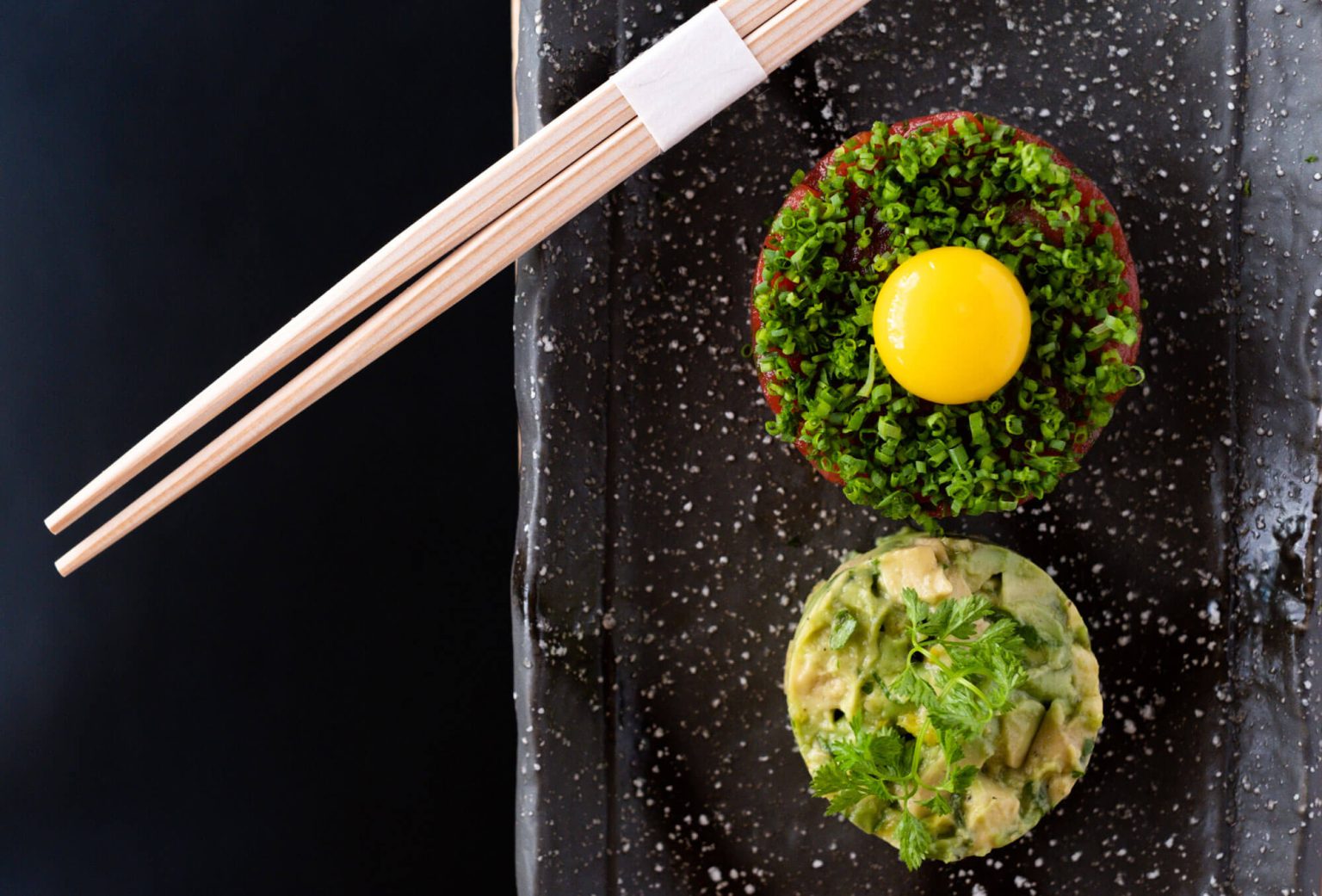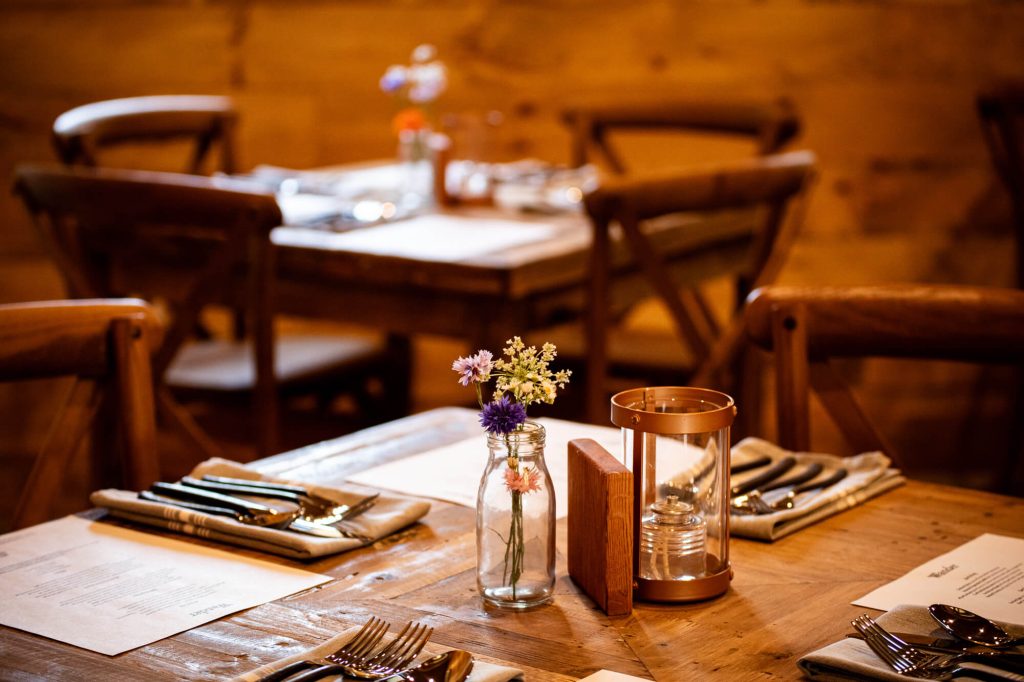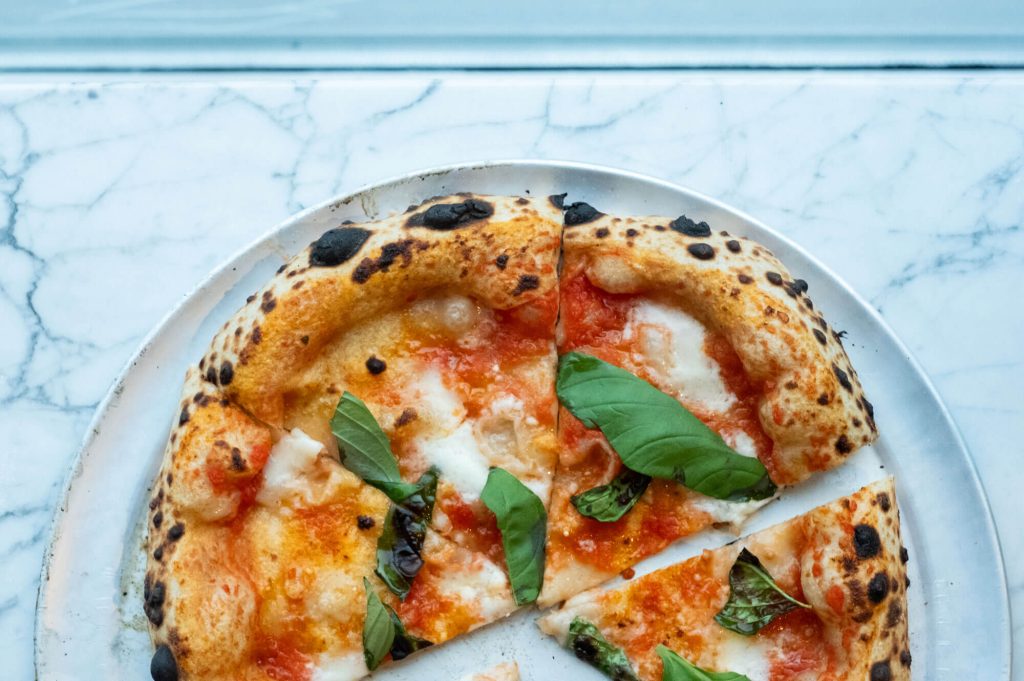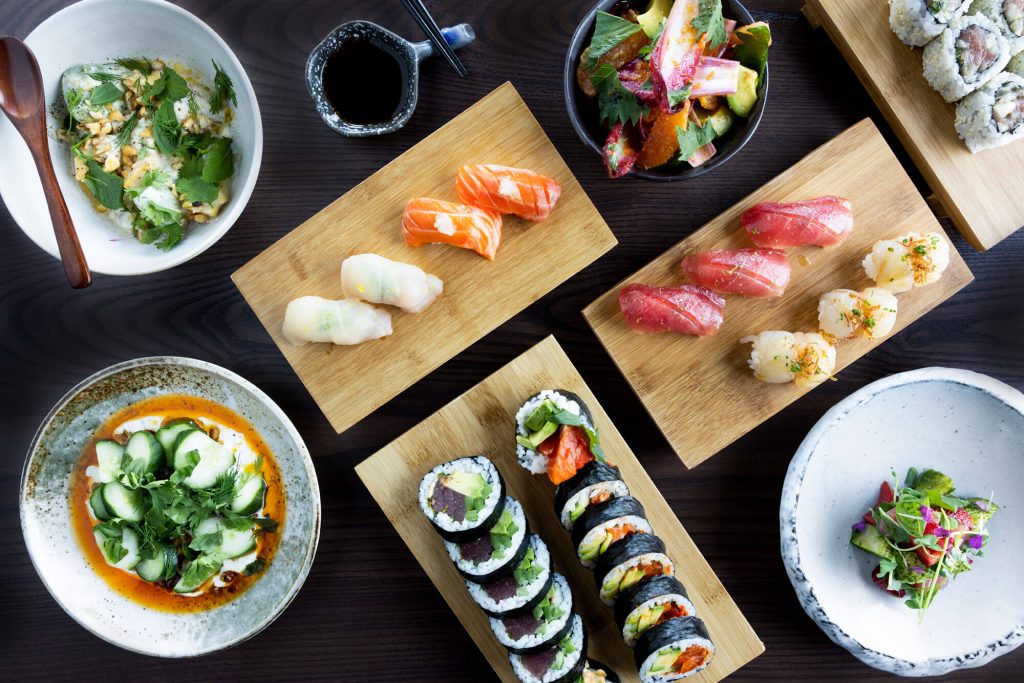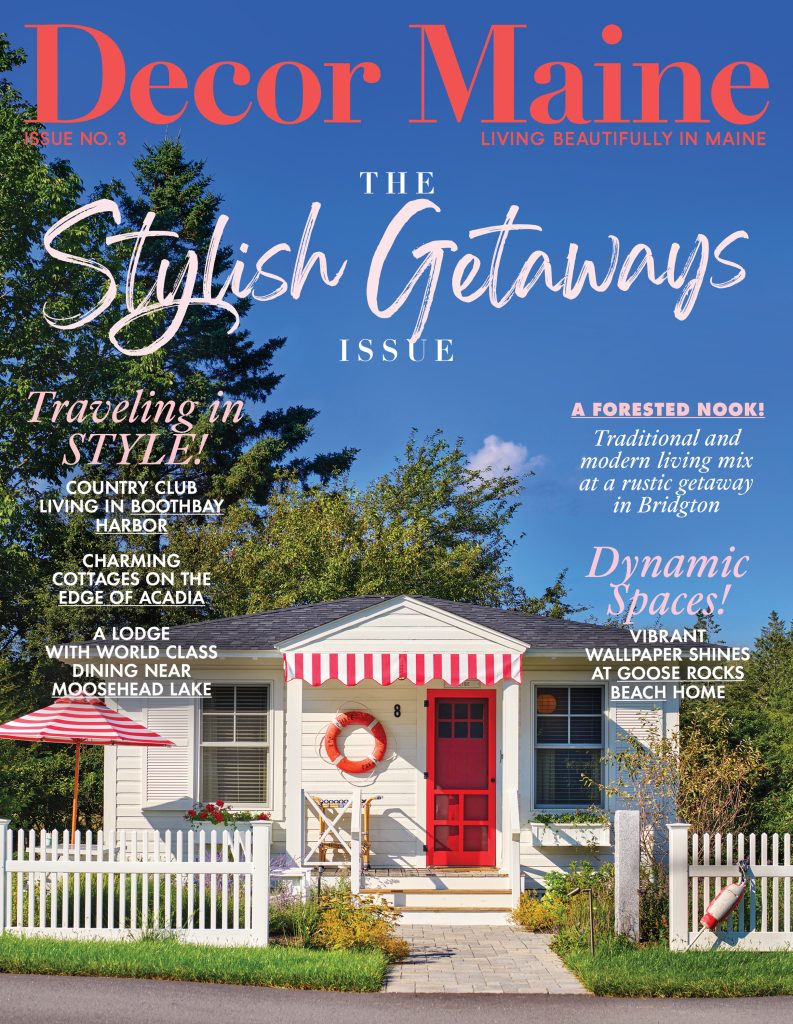As Portland’s illustrious food landscape has morphed, expanded, and embraced new sources of inspiration over the years, it’s impossible to ignore the impact that certain culinary pioneers have had. Chef Masa Miyake was arguably the first in the area to go all-in on global sushi—meaning it embraces the art of washoku (a.k.a. traditional Japanese) that artfully incorporates ingredients and cooking techniques from France, Italy, and America. And with it he’s been inspiring diners and menus around town since 2007, when he opened his eponymous restaurant at its original Spring Street location.There he taught diners to expect the unexpected. In lieu of tired and bland sushi bar staples (I’m looking at you, fake-crabmeat California roll), he served ultra-fresh, extremely high quality nigiri and sashimi laced with say, truffle oil or balsamic vinegar. That continued after he moved Miyake to its current location on Fore Street in 2011, and is as true as ever now that the restaurant is re-emerging after a nearly two-year closure—during which time it underwent a major makeover.
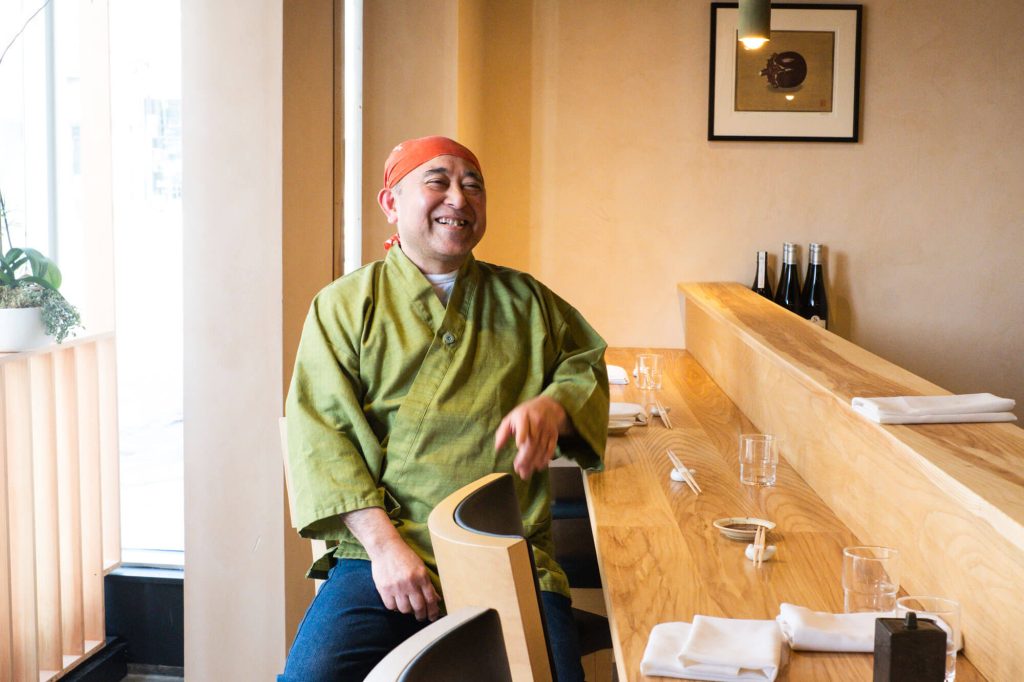
It only makes sense that, after cementing his local chops with a slew of shout-outs from national food publications and two James Beard nominations Masa would want a space that mirrors his elegant menu. So during the closing he tapped general contractor Justin Tourigny of Halcyon Built and Tom Draper of Outer Forest Woodworking, who created a new sushi bar—now the room’s focal point—a separate beverage bar, new window treatments, and banquettes. It’s all set against a backdrop by Athena Paint and Plaster. “The plaster provided an organic texture reminiscent of traditional Japanese wall treatments,” says general manager Courtney Packer, interpreting for Masa. “The soft pink hue is a nod to Masa’s sometimes non-traditional style.” The net effect is a space that feels calm, even when every seat in the house is filled.
And the menu has been refreshed alongside the room. Gone is the previous omakase offering of multiple courses, replaced by a single, chef’s-choice plate of either sashimi or nigiri. There’s still a spotlight on à la carte sashimi and nigiri, using as much Maine sea urchin, lobster, crab, monkfish, and scallops as possible. The excellence of those ingredients is what makes each dish sing—as does their simplicity. And that gets at Masa’s penchant for blending certain cuisines. Adding that he ran an Italian restaurant in Tokyo in the late ’90s, Courtney explains, “Masa loves the simplicity of classic Italian dishes, which rely on just a few good quality ingredients.”
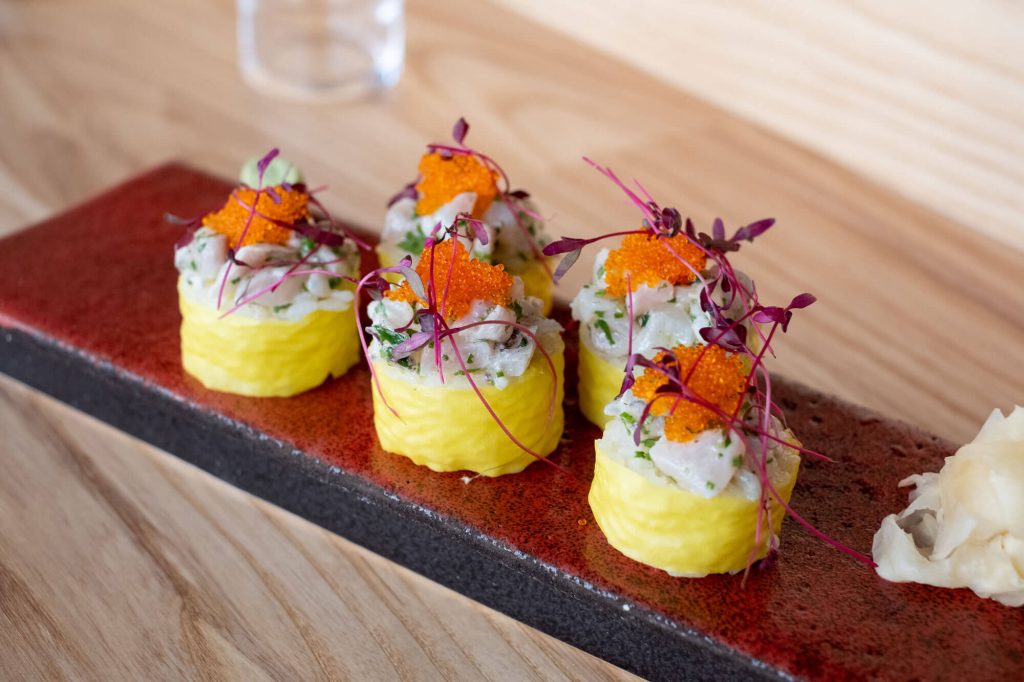
Which leads us to his signature global sushi rolls, and the biggest newcomer to the menu: the shared plates. It’s all a stage for layerings—by turns nuanced and high-drama—of sea urchin broiled with mascarpone and truffle oil (the yaki uni); bluefin tuna in soy and sesame topped with a quail egg (in the maguro yukke); and diced snapper with cilantro, truffle oil, shiso, and tobiko (the ceviche roll).
As such plates—and the restaurant that serves them—evolve, so do the diners craving them. Miyake has been a tough reservation to score since it reopened. “I think it is a combination of more people knowing our restaurant style and menu,” says Courtney, “and also more people being adventurous.”
As ever, come expecting the unexpected. ▪
